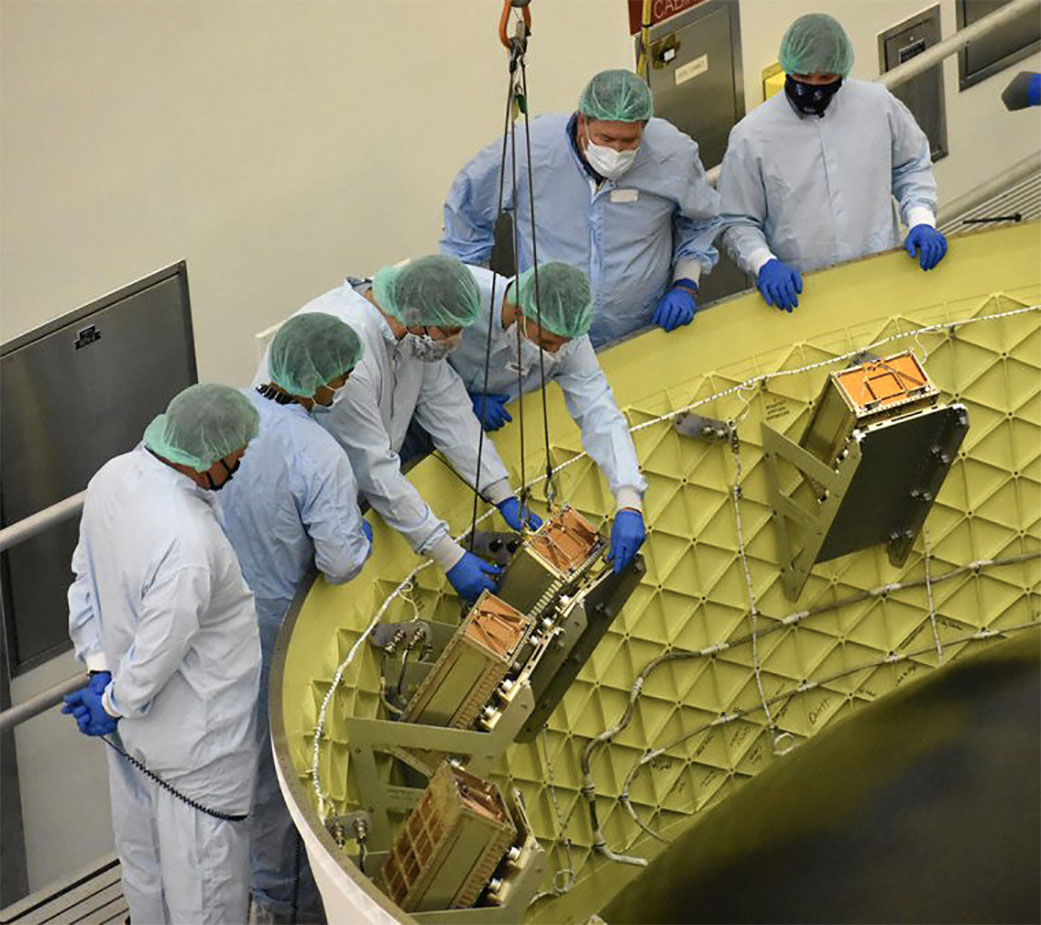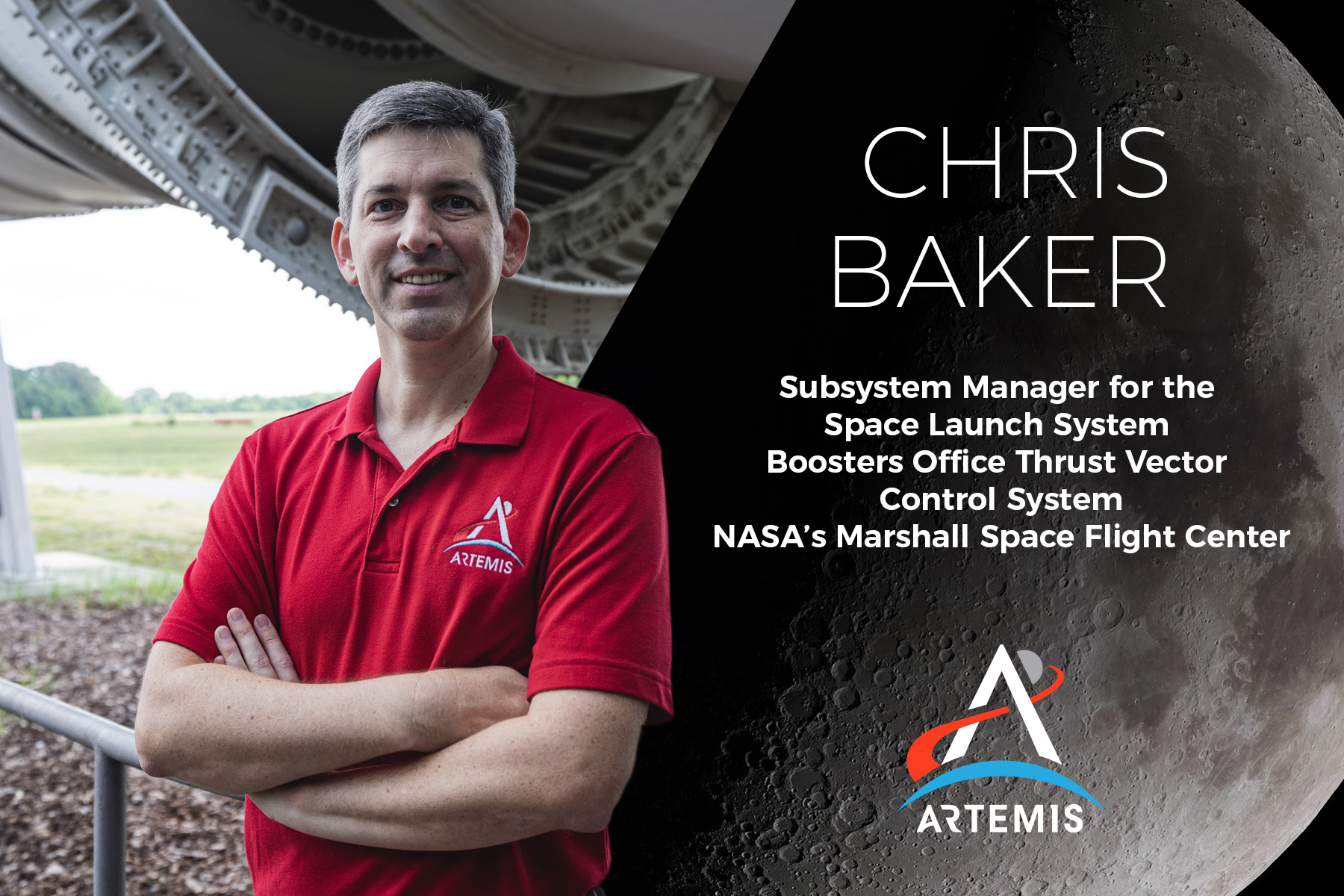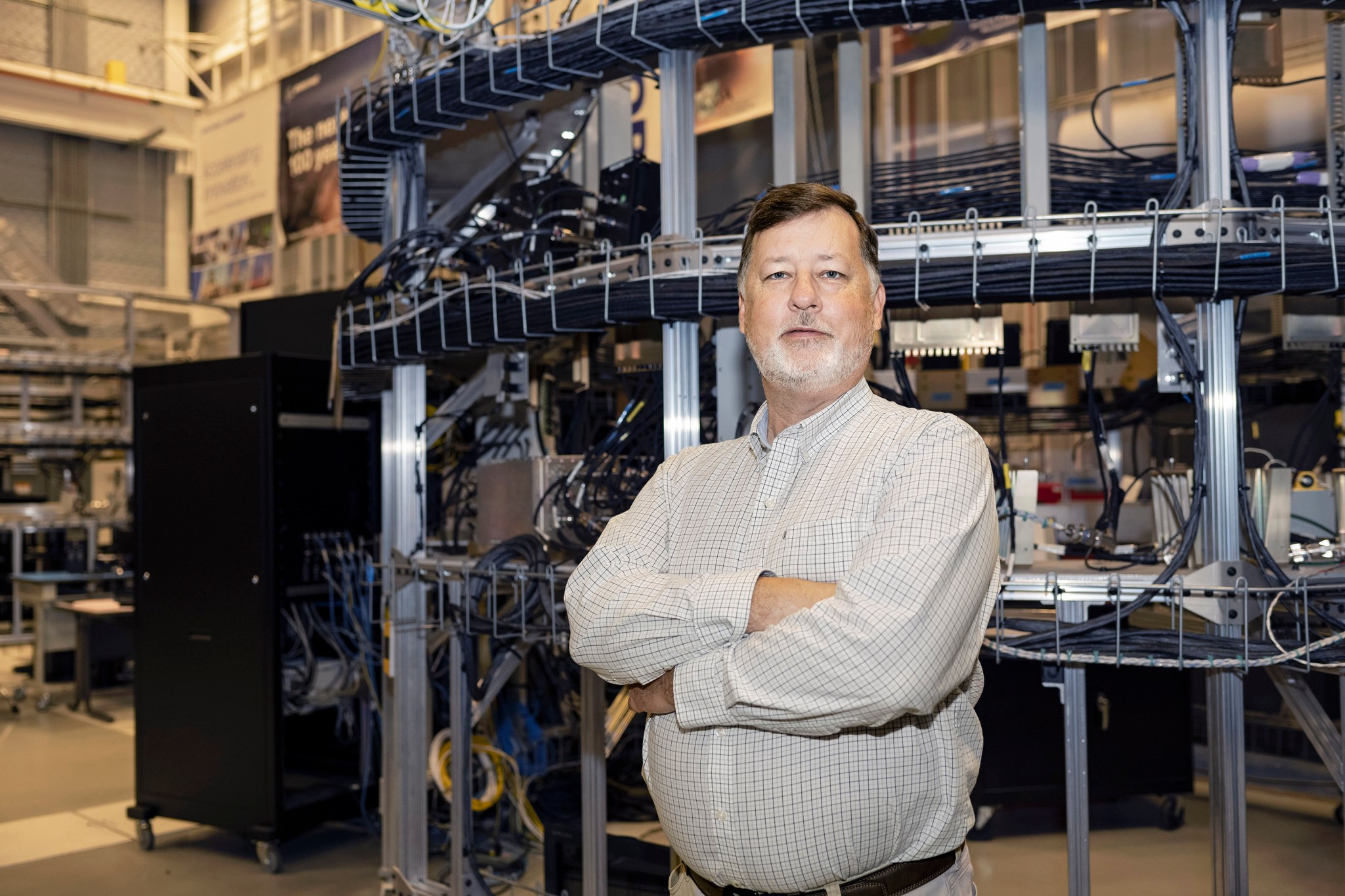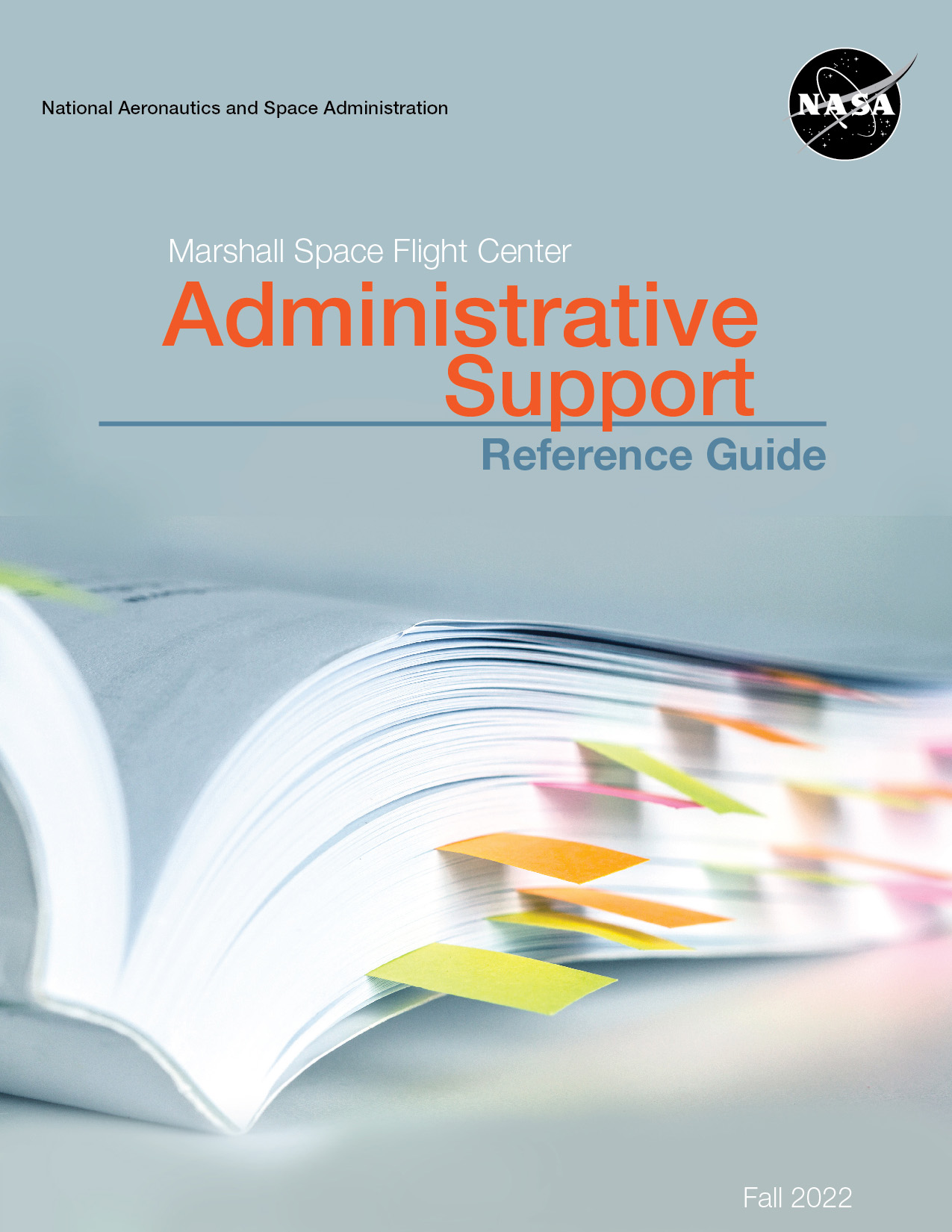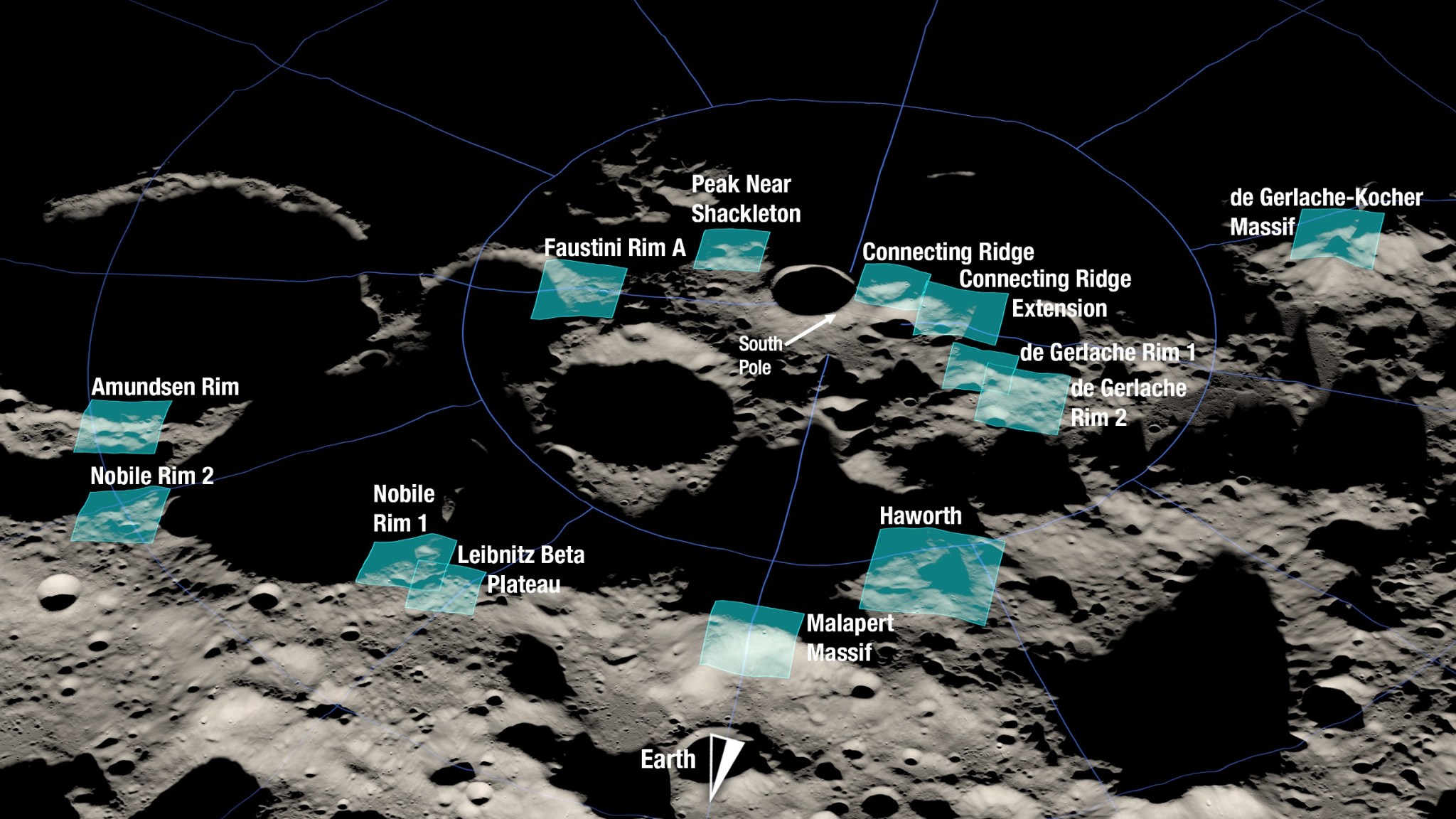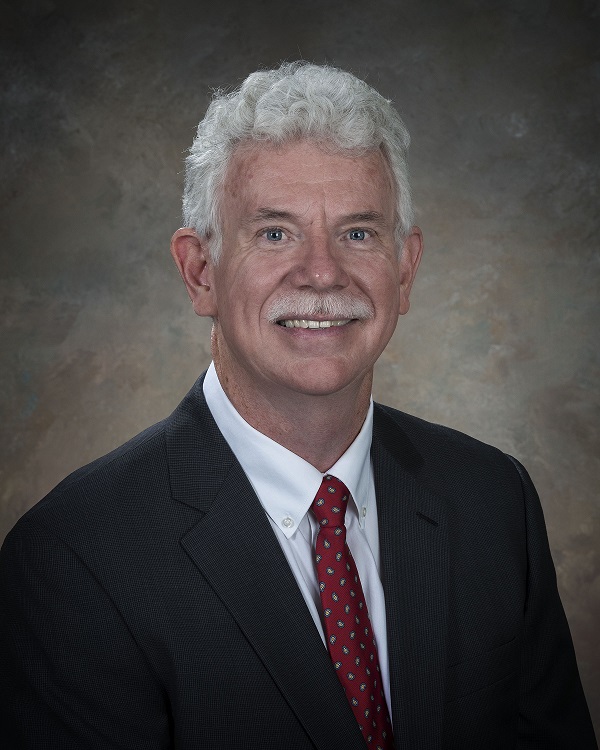In This Week’s Star
- Marshall Engineers, Facilities, Tools Contribute to Artemis Success
- Lead-up to Launch: Scott Huzar
- I Am Artemis: Chris Baker
- Take 5 with Eric Corder
- Marshall Administrative Support Reference Guide Now Available to Team Members
- Brazilian Science, Space Leaders Visit NASA
- NASA Identifies Candidate Regions for Landing Next Americans on Moon
- With Busy Fall Ahead, Pay Attention to Your Level of Stress
Marshall Engineers, Facilities, Tools Contribute to Artemis Success
By Janet Sudnik
When the Space Launch System (SLS) lifts off from Earth with more power than any rocket NASA has ever built and soars toward the Moon for the Artemis I mission, it will be propelled by the knowledge, skill, and support of the people and programs at every NASA center across the country.
While Artemis is an agencywide effort, many of the people, programs, and facilities that built, tested, and readied the mega rocket and other key Artemis components for this next era of spaceflight are at Marshall Space Flight Center. Marshall has not only contributed to Artemis I, but teams are already building rockets and working on other technology and hardware needed for future missions that will land the first woman and the first person of color on the surface of the Moon, part of establishing a long-term lunar presence.
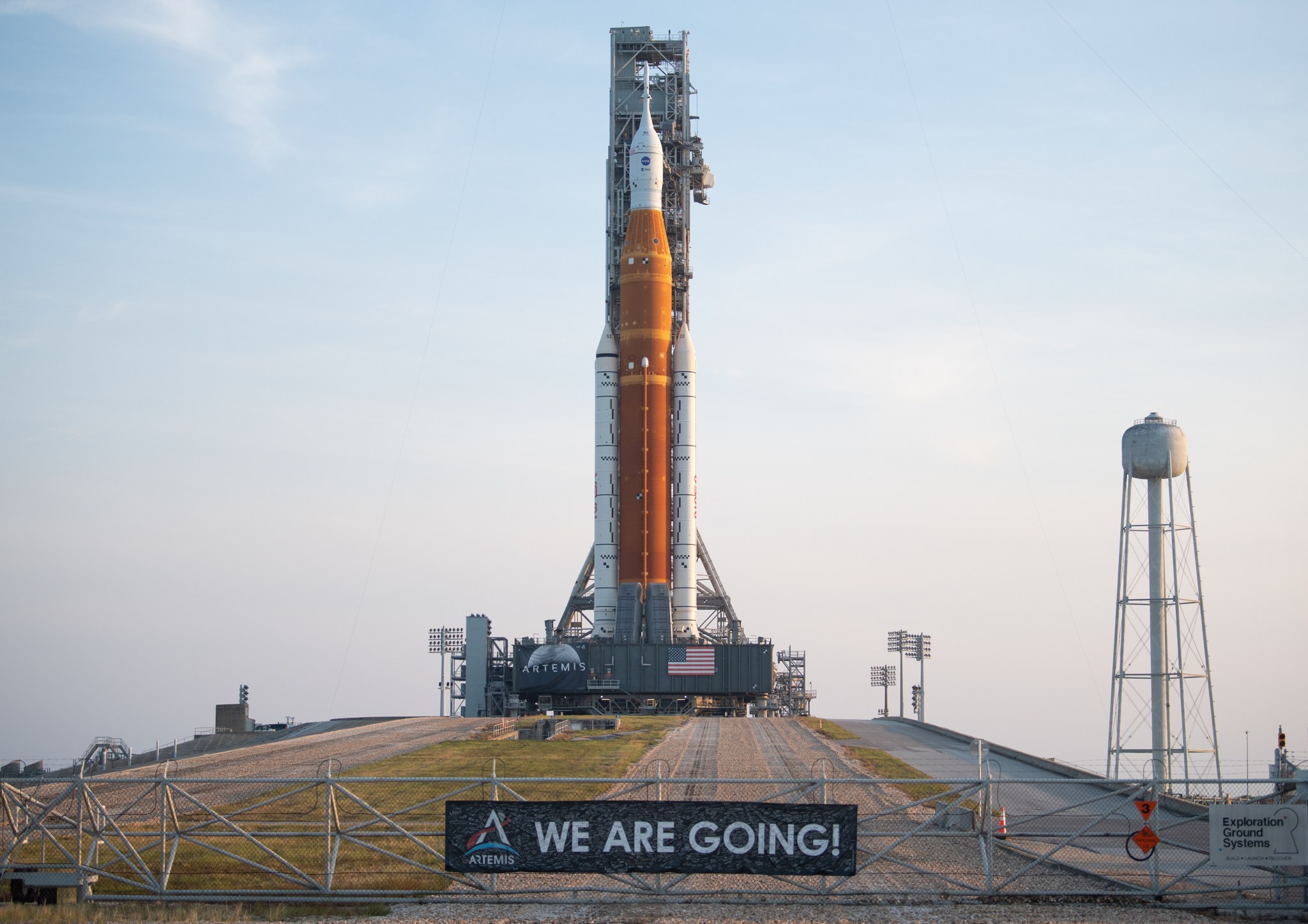
NASA is proceeding toward a two-hour launch window that opens at 7:33 a.m. Aug. 29 from Kennedy Space Center’s Launch Pad 39B. Marshall will host a launch watch party beginning at 7 a.m. Aug. 29 in the 4203 cafeteria.
“Artemis I will carry a lot of the expertise, effort, and pride of our Marshall team members,” Marshall Director Jody Singer said. “From manufacturing and testing the bones and brains of the Space Launch System rocket, to supporting it through this flight and beyond, we are so proud to contribute to this historic achievement in our nation’s space program. Go Artemis!”
Marshall is home to the Space Launch System Program Office, which leads the planning, design, development, testing, evaluation, production, and operation of the integrated launch vehicle. Marshall team members also developed and tested the flight software in-house and built key parts of the rocket in manufacturing facilities at Marshall and at Michoud Assembly Facility.
Marshall has a legacy of propelling NASA’s exploration through engineering, which is essential for a return to the Moon. Here are some of the many distinct facilities, tools, and hardware at Marshall that contributed to the Artemis I mission:
Marshall engineers have designed, developed, tested, and delivered SLS software that will tell the Artemis I rocket how to operate during its launch and ascent to orbit. The Systems Integration Lab/Systems Integration Test Facility allows engineers to fully simulate the integration of software and hardware systems prior to hardware manufacturing and test flight. Engineers also create and run end-to-end simulation environments that support the entire project life cycle. These unique capabilities ensure that software and hardware integrate seamlessly before vehicle manufacturing and assembly.
The launch vehicle stage adapter was built at Marshall’s Advanced Manufacturing Facility. The facility supports the center’s unique, cutting-edge tools and systems additive manufacturing, including laser welding and 3D printing. The cone-shaped adapter was manufactured on a 30-foot welding tool – it is the largest piece of the rocket built at the facility. The adapter provides structural support for launch, and also protects avionics and electrical devices from extreme vibration and acoustic conditions during launch and ascent.
The Orion stage adapter, also constructed at the Advanced Manufacturing Facility, will join Orion to the rocket’s interim cryogenic propulsion stage – a liquid oxygen/liquid hydrogen-based in-space stage that will give the spacecraft the push needed to go to deep space. The Orion stage adapter contains a diaphragm that provides a barrier to prevent gases generated during launch, such as hydrogen, from entering Orion. The adapter will also carry small secondary payloads, called CubeSats, to deep space to perform their own science missions.
The Orion launch abort system, which will carry the crew to safety in the event of an anomaly during a future Artemis launch, is managed at Marshall.
The SLS Engineering Support Center, located in the Huntsville Operations & Support Center, allows engineers specializing in the engines, boosters, core stage, avionics, and upper stage to monitor the rocket’s propulsion and other systems during the countdown and flight. Leading up to and during launch, teams in the SESC analyze and monitor temperatures, pressures, flow rates, stresses and other types of telemetry from the rocket. They also produce flash reports for the Mission Management Team and report on and archive launch vehicle data for additional study in the weeks and months after launch. During Artemis launches, the center will support the Launch Control Center at Kennedy Space Center, and the Flight Operations Directorate team at the Mission Control Center at Johnson Space Center.
Click here for more about Artemis I and Marshall contributions.
Sudnik is a public affairs officer in Marshall’s Office of Strategic Analysis & Communications.
Lead-up to Launch: Scott Huzar
As NASA approaches the Artemis I launch, the Marshall Star is spotlighting team members at the agency’s Marshall Space Flight Center and Michoud Assembly Facility and how they are contributing to the mission. This issue features Scott Huzar, manager of the Orion Launch Abort System at Marshall.
Question: What is your role with the upcoming Artemis I launch?
Huzar: As NASA’s launch abort system project manager, it is through a strong, dedicated team of Lockheed Martin and NASA personnel, including Langley Research Center, Marshall, and Johnson Space Center, that we provide a launch abort system that meets design and performance requirements. For Artemis I, there is no launch abort system abort capability since this will be an uncrewed mission. Therefore, the abort motor and the attitude control motor are both inert. However, the jettison motor will be active and will need to safely separate the launch abort system from Orion during ascent at approximately 3 1/2 minutes into flight.
Question: What does it mean to you to be involved with the Artemis Generation and NASA’s return to the Moon and beyond?
Huzar: At this point in my life, I’m a little further along in my career. As my time with NASA draws to a close in the coming years, this accomplishment will mean a great deal to me. I faintly remember some of the coverage of the Apollo era, but I was too young at the time to appreciate the significance of their accomplishments. Having the opportunity to now be a part of the generation that returns us back to the Moon is very exciting.
Question: How did you become interested in a career with NASA?
Huzar: I grew up as a military dependent. My father served in the U.S. Air Force, and his last duty station was at Patrick Air Force Base in Brevard County, Florida. While there, I was able to watch the first 13 launches for the Space Shuttle Program, as well as numerous satellite launches. Having been around military aircraft all my life, I always had an interest in flight. However, once I had the chance to view space launches and meet an astronaut, I made the decision to pursue a career in aerospace engineering. In particular, I wanted to work for NASA and be a part of the shuttle program. In 1991, I realized my goal, having joined NASA as a structures engineer on the space shuttle Atlantis.
Question: In your view, what makes the launch of Artemis I and future missions so important?
Huzar: While people across the entire team have remained focused on addressing challenges and resolving issues to make this mission a success, some may have yet to realize we are all about to be a part of the next chapter in NASA’s storied history. The success of Artemis I is just the next step toward advancing our goals of further human exploration of the Moon, and eventually Mars. It is through the success of Artemis I and subsequent missions that we will continue to stretch agency goals, inspire the next generation of NASA, and challenge them to see how far ahead of our accomplishments they can leave their own footprints on this agency.
Question: Where will you watch the launch?
Huzar: I plan to be on-site at Kennedy Space Center.
I Am Artemis: Chris Baker
Patience and attention to detail are traits that lead to great results, whether you’re solving a problem with a rocket’s propulsion system or waiting on just the right angle of sunlight for a photograph.
Chris Baker knows this well. As the subsystem manager for the Space Launch System (SLS) Boosters Office thrust vector control system, Baker leads the thrust vector control system efforts for both the heritage hardware boosters and the next-generation boosters. The system steers the nozzle of each booster during the rocket’s first two minutes of flight.
The attention to detail Baker puts into his work for NASA also come into play in his photography, one of his hobbies, which has won several awards.
“The technical parts of both jobs are very similar in the way my thought process works. All the physics classes and all the engineering-type classes I took really helped me understand how a camera ‘thinks,’” Baker said. “If my photograph isn’t coming out right, I understand the engineering and the science behind how the camera takes a picture so I can quickly adjust my camera setting or what lens I’m using.”
Baker grew up in Florida, so watching space shuttles launch from Kennedy Space Center was within his field of view, but working for NASA wasn’t initially in the picture. As a mechanical engineering student at the Florida Institute of Technology, he thought he might pursue a career in the automotive industry. But he preferred balmy Florida to Detroit and started his aerospace career in 1997 with United Space Boosters Inc., a division of Pratt & Whitney, which was the original prime contractor for assembly, checkout, and refurbishment of the non-motor components of the booster during the Space Shuttle Program. He later worked in the boosters structural analysis group and for other contractors, including the Jacobs team at Marshall Space Flight Center, before joining NASA in 2019.
Although his education and career were focused on engineering – he has bachelor’s and master’s degrees in mechanical engineering from FIT and a master’s in industrial engineering from the University of Florida – the arts are also part of his background. His mother’s side of the family were artists, and he grew up enjoying drawing and painting.
“I do a lot of homework, and I can teach myself a lot with photography,” he said. “Once you learn a few simple things, you can get started.”
Take 5 with Eric Corder
By Daniel Boyette
You could say that Eric Corder grew up with a picture in his mind of what he wanted to do as a career.
Corder’s father, Bobby, started as photographer with NASA in 1960, and he spent nearly 40 years taking photos and processing high-speed film of rocket motor development in test areas.
“As a young child, I remember him sharing with my family pictures of the cool things he was working around,” said Corder, manager of the Space Launch System Exploration Upper Stage Avionics and Flight Control Subsystem at NASA’s Marshall Space Flight Center. “About the time I started grade school, man landed on the Moon and my father started bringing home pictures of the Moon and all the spacewalks that had taken place. I remember thinking my father had the best job ever, and that I, too, wanted to grow up to be just like him working on the space program.”
Corder has followed in his father’s footsteps with a NASA career approaching four decades. He’s currently working on the evolved SLS rocket variant known as the Block 1B. Different from the Block 1, which uses the single-engine interim cryogenic propulsion stage, the Block 1B’s more powerful Exploration Upper Stage uses four RL10 engines with much larger propellant tanks that will send a crewed Orion with heavier payloads to the Moon in a single mission. The Block 1 configuration will fly for the first three Artemis missions, while the Block 1B’s first flight is scheduled for Artemis IV.
Question: What are your primary responsibilities as manager of the Exploration Upper Stage Avionics and Flight Control Subsystem?
Corder: I am responsible for all aspects of the design, development, test, and evaluation effort related to avionics flight control, power systems, autonomous flight system safety, and thrust vector control. I have the privilege of working with some of the best engineers in the agency and industry on the development of the new Exploration Upper Stage.
Question: What did you learn from qualifying the Artemis I booster avionics for flight and how are you applying those lessons as you develop avionics for the
Exploration Upper Stage?
Corder: Building and qualifying human-rated avionics for a new space vehicle is always challenging. Our booster team had a lot of experience with the shuttle solid rocket booster avionics and applied that knowledge to the new booster avionics designs. Building and testing engineering units early in development was the key to having a successful qualification program. I have brought that same thought process to the EUS avionics design, development, test, and evaluation effort and incorporated the lessons we learned during booster avionics development to the EUS project. We are performing system-level integration testing with much of our EUS avionics hardware during the development stage to identify any system-level issues as early as possible.
Question: How do you manage to integrate the various contractors and civil servants who work on Exploration Upper Stage avionics?
Corder: Our EUS project team is very small compared to most project teams, so integrating with our prime contractor can prove to be difficult with limited engagement. Our government and contractor team has very much embraced the idea of a “badgeless” team. This type of engagement has proved to be very successful in building great relationships and transparency in data sharing with the team. Having open dialog has allowed the team to identify and resolve issues much faster on a program soon returning to the Moon.
Question: What excites you most about the future of human space exploration?
Corder: There is so much untapped potential in space exploration. The thought of humans living in space and traveling to other planets is exciting. Knowing that our children will build on our legacy like we have built on our parent’s legacy has to excite fellow explorers.
Question: What has been the proudest moment of your career?
Corder: I have been with NASA for over 35 years and have loved every minute of my career. Working with so many great people that I can call my friends has been very rewarding. Watching your hardware fly on shuttle missions and being involved in the camera development work for the shuttle program was very special. Seeing the Solar X-ray Imager in operation that my colleagues and I built for the National Oceanic and Atmospheric Administration’s Geostationary Operational Environmental Satellites program was exciting. However, I believe watching the SLS Artemis I vehicle have a successful launch will be a moment that will stay in my mind a long time.
Boyette, an LSINC employee, supports Marshall’s Office of Strategic Analysis & Communications.
Marshall Administrative Support Reference Guide Now Available to Team Members
By Rick Smith
Administrative assistants and other professional support personnel across NASA’s Marshall Space Flight Center now have an updated resource for navigating the daily business of the center.
The Marshall Administrative Support Reference Guide, now available to team members on Inside Marshall, is a 72-page electronic document containing contacts, step-by-step instructions on a variety of tasks, and useful tips for pursuing the work of the entire NASA enterprise.
From the intricacies of printer setup to contacts in the Protective Services Office, from an overview of Redstone Arsenal’s visitor security protocol to complete instructions for the NASA Integrated Service Management System, the guide is packed with vital insight for new hires and veteran support staff alike.
“We’re pleased to make these resources available not just to executive assistants and other support personnel but to any Marshall user seeking the online resources necessary to give our customers and teams the best possible support,” said Chrissa Hall, management analyst in Marshall’s Office of the Director.
The formerly hard-copy guide – modified over the years as NASA workflows evolved from punchcards and physical interoffice mail delivery to high-tech software solutions and video conferencing – was a collaborative effort, completely updated and expanded this summer by a team of Marshall administrative professionals led by Hall and including representatives of various center organizations. Its new look and easily updatable digital format was designed by Janice Robinson, graphics team supervisor in the Office of Strategic Analysis and Communications.
The downloadable electronic document features a hotlinked table of contents to let team members quickly jump to the information section they need. A modifiable notes section on each page enables them to add phone numbers or other information they use regularly, personalizing their copy of the guide to make it even more useful.
Hall said her team’s goal is to maintain a vital living document linked to critical Future of Work topics, keeping pace with Marshall’s evolving business enterprise and user tools. Annual revisions to the guide are planned, she said, “keeping its contents up to date and our workforce up to speed during an evolving time for NASA and the center, as we continue to transition to new ways of conducting business in a hybrid environment.”
Smith, a Manufacturing Technical Solutions employee, supports Marshall’s Office of Strategic Analysis & Communications.
Brazilian Science, Space Leaders Visit NASA
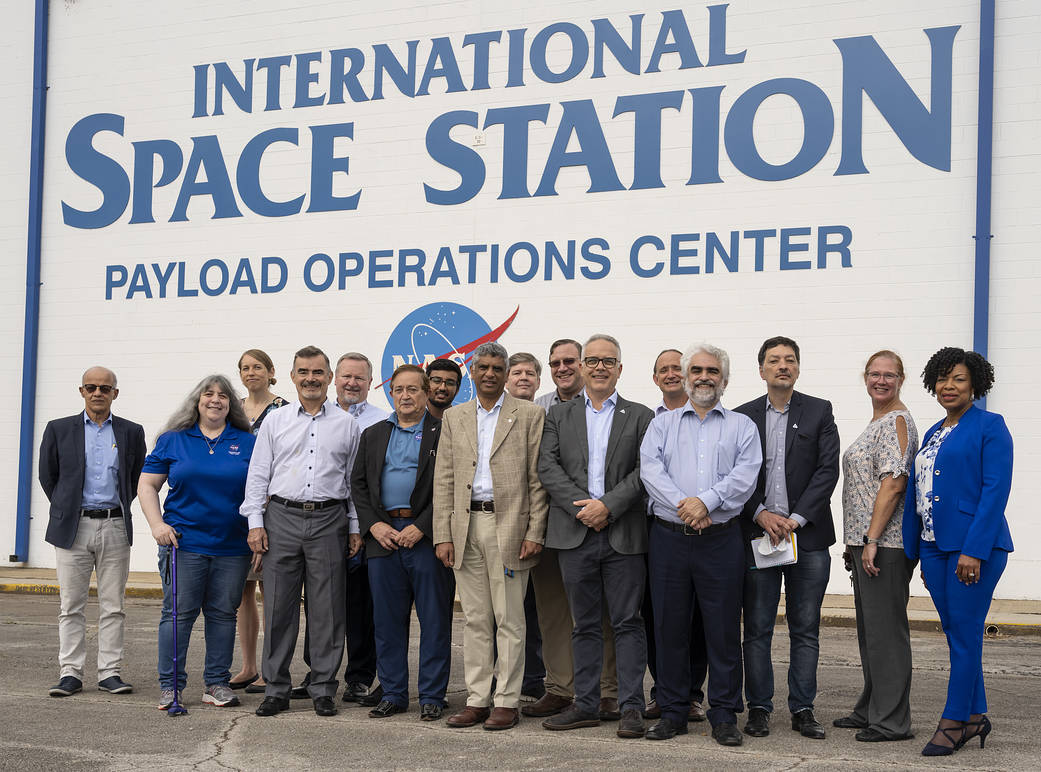
(Front row) SPORT Project Scientist Linda Krause, Marshall, left; Brazilian Space Agency President Carlos Augusto Teixeira de Moura; SPORT Mission Manager Joe Casas, Marshall; Exploration & Transportation Development Office Manager Rajiv Doreswamy, Marshall; Artemis Coordinator Rodrigo Leonardi, Brazilian Space Agency; SPORT Project Manager Luis Eduardo Vergueiro Loues da Costa, Technological Aeronautics Institute, Brazil; Counselor Renato José Stancato de Souza, Brazilian Embassy in Washington; Science Research & Projects Office Deputy Manager Nicole Pelfrey, Marshall; SPORT Project Manager Shelia Nash-Stevenson, Marshall, right.
(Back row) Lt. Gen. Ricardo Cesar Mangrich, Special Advisor to the Brazilian Minister of Science, Technology, and Innovation; Planetary Scientist Heidi Haviland, Marshall; Science Research & Projects Office Manager Walt Petersen; International Program Specialist Youshay Rizvi, NASA Headquarters in Washington; Heliophysics and Planetary Science Branch Chief David McKenzie, Marshall; Strategic Analyst Michael Smith, Marshall; Science Division Deputy Director Justin Tilman, NASA Headquarters, right. Credits: NASA
Senior officials from the Brazilian Space Agency, the Brazilian Ministry for Science, Technology, and Innovation, and a professor from Brazil’s Technological Institute of Aeronautics with NASA team members at the Huntsville Operations Support Center during their visit to NASA’s Marshall Space Flight Center from Aug. 15-16. Brazil was the first Latin American country to sign the Artemis Accords, joining the United States and a growing number of nations committed to safe, responsible, and transparent behavior in space, and a common interest in preserving and protecting the outer space environment to ensure a safe and sustainable future in space for all. The Brazilian Space Agency is collaborating with Marshall on an upcoming CubeSat mission called the Scintillation Prediction Observations Research Task, or SPORT, that will study effects of space weather on Earth’s upper atmosphere. The visit included discussions with Marshall leaders about the space agencies’ successful partnership for SPORT and potential future collaborations in support of the Artemis program. Front, from left, SPORT Project Scientist Linda Krause, Marshall, left; Brazilian Space Agency President Carlos Augusto Teixeira de Moura; SPORT Mission Manager Joe Casas, Marshall; Exploration & Transportation Development Office Manager Rajiv Doreswamy, Marshall; Artemis Coordinator Rodrigo Leonardi, Brazilian Space Agency; SPORT Project Manager Luis Eduardo Vergueiro Loues da Costa, Technological Aeronautics Institute, Brazil; Counselor Renato José Stancato de Souza, Brazilian Embassy in Washington; Science Research & Projects Office Deputy Manager Nicole Pelfrey, Marshall; SPORT Project Manager Shelia Nash-Stevenson, Marshall. Back, Lt. Gen. Ricardo Cesar Mangrich, Special Advisor to the Brazilian Minister of Science, Technology, and Innovation; Planetary Scientist Heidi Haviland, Marshall; Science Research & Projects Office Manager Walt Petersen; International Program Specialist Youshay Rizvi, NASA Headquarters in Washington; Heliophysics and Planetary Science Branch Chief David McKenzie, Marshall; Strategic Analyst Michael Smith, Marshall; Science Division Deputy Director Justin Tilman, NASA Headquarters.
NASA Identifies Candidate Regions for Landing Next Americans on Moon
As NASA prepares to send astronauts back to the Moon under Artemis, the agency has identified 13 candidate landing regions near the lunar South Pole. Each region contains multiple potential landing sites for Artemis III, which will be the first of the Artemis missions to bring crew to the lunar surface, including the first woman to set foot on the Moon.
“Selecting these regions means we are one giant leap closer to returning humans to the Moon for the first time since Apollo,” said Mark Kirasich, deputy associate administrator for the Artemis Campaign Development Division at NASA Headquarters in Washington. “When we do, it will be unlike any mission that’s come before as astronauts venture into dark areas previously unexplored by humans and lay the groundwork for future long-term stays.”
NASA identified the following candidate regions for an Artemis III lunar landing:
- Faustini Rim A
- Peak Near Shackleton
- Connecting Ridge
- Connecting Ridge Extension
- de Gerlache Rim 1
- de Gerlache Rim 2
- de Gerlache-Kocher Massif
- Haworth
- Malapert Massif
- Leibnitz Beta Plateau
- Nobile Rim 1
- Nobile Rim 2
- Amundsen Rim
Each of these regions is located within six degrees of latitude of the lunar South Pole and, collectively, contain diverse geologic features. Together, the regions provide landing options for all potential Artemis III launch opportunities. Specific landing sites are tightly coupled to the timing of the launch window, so multiple regions ensure flexibility to launch throughout the year.
To select the regions, an agencywide team of scientists and engineers assessed the area near the lunar South Pole using data from NASA’s Lunar Reconnaissance Orbiter and decades of publications and lunar science findings. In addition to considering launch window availability, the team evaluated regions based on their ability to accommodate a safe landing, using criteria including terrain slope, ease of communications with Earth, and lighting conditions. To determine accessibility, the team also considered combined capabilities of the Space Launch System rocket, the Orion spacecraft, and the SpaceX-provided Starship human landing system.
All regions considered are scientifically significant because of their proximity to the lunar South Pole, which is an area that contains permanently shadowed regions rich in resources and in terrain unexplored by humans.
“Several of the proposed sites within the regions are located among some of the oldest parts of the Moon, and together with the permanently shadowed regions, provide the opportunity to learn about the history of the Moon through previously unstudied lunar materials,” said Sarah Noble, Artemis lunar science lead for NASA’s Planetary Science Division.
The analysis team weighed other landing criteria with specific Artemis III science objectives, including the goal to land close enough to a permanently shadowed region to allow crew to conduct a moonwalk, while limiting disturbance when landing. This will allow crew to collect samples and conduct scientific analysis in an uncompromised area, yielding important information about the depth, distribution, and composition of water ice that was confirmed at the Moon’s South Pole.
The team identified regions that can fulfill the moonwalk objective by ensuring proximity to permanently shadowed regions, and also factored in other lighting conditions. All 13 regions contain sites that provide continuous access to sunlight throughout a 6.5-day period – the planned duration of the Artemis III surface mission. Access to sunlight is critical for a long-term stay at the Moon because it provides a power source and minimizes temperature variations.
“Developing a blueprint for exploring the solar system means learning how to use resources that are available to us while also preserving their scientific integrity”, said Jacob Bleacher, chief exploration scientist for NASA. “Lunar water ice is valuable from a scientific perspective and also as a resource, because from it we can extract oxygen and hydrogen for life support systems and fuel.”
NASA will discuss the 13 regions with broader science and engineering communities through conferences and workshops to solicit input about the merits of each region. This feedback will inform site selections in the future, and NASA may identify additional regions for consideration. The agency will also continue to work with SpaceX to confirm Starship’s landing capabilities and assess the options accordingly.
NASA will select sites within regions for Artemis III after it identifies the mission’s target launch dates, which dictate transfer trajectories and surface environment conditions.
Through Artemis, NASA will land the first woman and the first person of color on the Moon, paving the way for a long-term, sustainable lunar presence and serving as a steppingstone for future astronaut missions to Mars.
With Busy Fall Ahead, Pay Attention to Your Level of Stress
Dear Marshall family,
Have you ever noticed how very busy we are in the fall of the year? For many, it’s a time of helping children and young adults get launched into a new school year. For others, it’s a time of preparation and excitement as we look forward to high school and college football and other extracurricular activities. And for many, it’s a time of wrapping up a host of loose ends before the close of the fiscal year. As we go about our busy schedules, it’s important to take time to pause and reflect upon how fortunate we are to have family and friends, great opportunities, enjoyable experiences, and the many other positive aspects of our lives, and to also be mindful of the need to take good care of our physical, mental, and emotional health along the way.
Being so busy can sometimes lead to a great deal of stress. Not one of us is immune to stress or the negative impacts of experiencing too much stress, and so I encourage each of you to pay attention to your level of stress, identify where the stress is coming from, and take deliberate actions to reduce or eliminate stress where you can. Stay engaged with your support systems and in your hobbies and other activities that help you to relax and recharge, and try to get enough rest and sleep on a regular basis. I know this can be difficult, but there is a very large body of research that shows sleep deprivation impacts us negatively in many ways, across all aspects of our functioning, and so getting enough sleep really does need to be a priority. Beyond all this, it’s important for each of us to keep in mind that everyone we know or encounter is also dealing with a burden of stress. Everyone is dealing with something. We may not know what those around us are going through, or dealing with, but we have the opportunity to help them simply by showing them kindness and respect.
Switching gears from stress to excitement, or maybe a combination of the two, I want to take this opportunity to acknowledge the upcoming launch of Artemis I. Many of you have worked directly on making SLS and Artemis I a reality, and many others have worked in roles that support it in one way or another. Your years of dedication and hard work are on display as Artemis I prepares for launch. Congratulations to you all! This is truly an amazing accomplishment!
I’ll close out with another request to be mindful of your well-being and to be deliberate in taking good care of yourself. Stay connected with your loved ones, friends, and colleagues. Be kind to others and be willing to both give and receive support. We are stronger together.
Be safe and well,
Dr. Terry Sterry
Licensed psychologist and Marshall Employee Assistance Program coordinator
For more information, visit the Employee Assistance Program page on Inside Marshall. For more information on NASA’s coronavirus response and teleworking, visit NASAPeople.


























